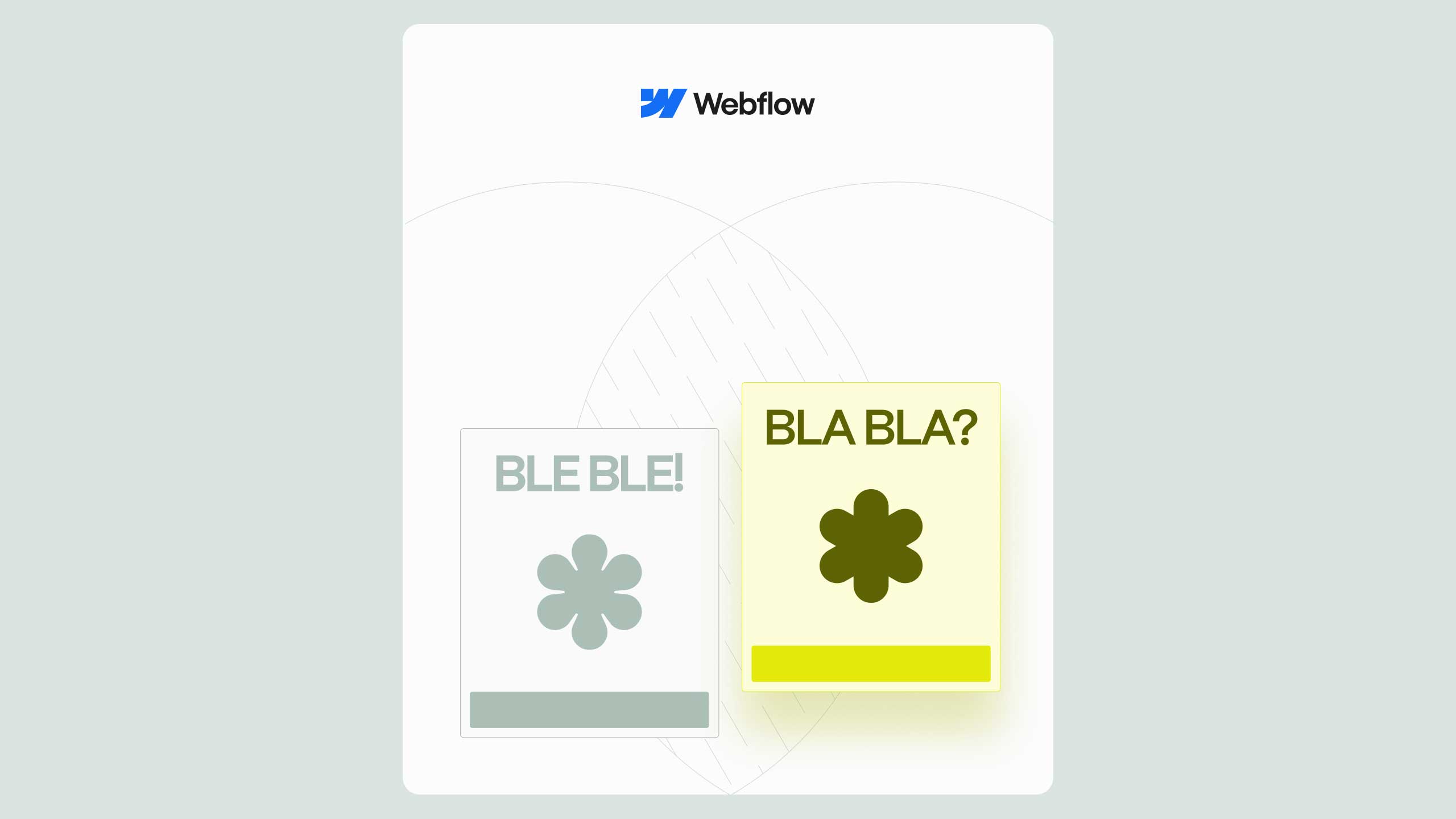How to Run a Successful A/B Test in Webflow Using Webflow Optimize

A/B testing is one of the most effective ways to improve your Webflow site’s performance, conversions, and user engagement. Whether you’re testing CTAs, layouts, or page speed optimizations, data-backed decisions lead to better results.
With Webflow Optimize, A/B testing is now easier and more streamlined—allowing you to experiment directly within Webflow without complex external integrations.
In this guide, we’ll cover:
- How to set up A/B testing in Webflow using Webflow Optimize
- Best practices for running effective experiments
- How to analyze results and implement changes
- Alternative tools like Optimizely, Hotjar, and Optibas to enhance A/B testing
Let’s dive into the process of optimizing your Webflow website with data-driven decisions.

Why A/B Testing in Webflow Matters
A/B testing (also known as split testing) involves showing two different versions of a webpage to users and measuring which one performs better.
This allows Webflow users to:
- Increase conversion rates with optimized headlines, CTAs, and design elements
- Improve user experience by testing layouts and navigation
- Reduce bounce rates and drive more meaningful interactions
Now, with Webflow Optimize, running A/B tests is more seamless than ever.
How to Set Up A/B Testing in Webflow with Webflow Optimize
Webflow Optimize is Webflow’s native A/B testing tool that lets you test different design and content variations without needing custom code.
Step 1: Define Your Hypothesis
Start by identifying what you want to test. Examples:
- “Changing the CTA button color from blue to green will increase click-through rates by 20%.”
- “A shorter form will increase sign-ups.”
Having a clear hypothesis ensures your test provides actionable insights.
Step 2: Create Your Variations
Inside Webflow:
- Duplicate your page and modify only one key element (CTA, heading, layout, etc.).
- Label your variants clearly (e.g., “Version A - Original” and “Version B - New CTA”).
- Keep everything else consistent to isolate the impact of your change.
Step 3: Set Up the A/B Test in Webflow Optimize
- Navigate to Webflow Optimize and create a new test.
- Choose the type of test: on-page variation or split URL.
- Define your audience split (50% see Version A, 50% see Version B).
- Connect it with Google Analytics 4 or Hotjar to track results.
Step 4: Run the Test & Monitor Performance
Once the test is live, track key performance indicators (KPIs) such as:
- Conversion Rate – Are more users completing your desired action?
- Click-Through Rate (CTR) – Are users engaging with the new variation?
- Time on Page – Is user engagement improving?
Using Webflow Optimize alongside Hotjar can provide visual insights, such as heatmaps and session recordings, to better understand user behavior.
Best Alternative Tools for A/B Testing in Webflow
While Webflow Optimize is a powerful built-in tool, combining it with external platforms can enhance your testing strategy.
1. Optimizely – Enterprise-Level A/B Testing
Optimizely is an advanced A/B testing tool perfect for companies needing:
- AI-driven personalization for different audience segments
- Advanced multivariate testing beyond simple A/B tests
- Integration with Webflow (requires manual setup)
Best for: Large-scale Webflow projects where precise targeting is needed.
2. Hotjar – Visual Behavior Analysis
While Hotjar is not a direct A/B testing tool, it helps you understand why one variation performs better than another through:
- Heatmaps – See where users click, scroll, and interact
- Session Recordings – Watch real users navigate your test variations
- User Feedback Polls – Gather direct input on design changes
Best for: Adding qualitative insights to Webflow Optimize experiments.
3. Optibase – Webflow-Specific Testing Tool
Optibas is a Webflow App Marketplace tool designed for native Webflow A/B testing. It enables:
- Easier split-testing setups directly within Webflow
- Performance tracking without external integrations
- Faster experimentation on landing pages and CTAs
Best for: Webflow users who want a no-code A/B testing experience.
How to Get the Best Results from A/B Testing
- Test One Change at a Time
If you modify multiple elements at once (e.g., CTA + headline + layout), you won’t know which change caused the result.
- Run the Test for a Sufficient Duration
Tests should run at least two weeks (depending on traffic volume) to reach statistical significance.
- Segment Your Audience
Use Webflow Optimize with Google Analytics 4 to analyze results by device, traffic source, and user behavior.
- Analyze & Implement the Winning Variation
Once the test is complete, apply the better-performing version permanently and iterate on new ideas.
A/B Testing Is a Continuous Process
Successful Webflow sites aren’t built on assumptions—they’re refined through constant testing and optimization.
By using Webflow Optimize and leveraging external tools like Optimizely, Hotjar, and Optibas, you can:
- Make data-driven improvements
- Increase conversions with proven strategies
- Build a website that evolves based on real user behavior
The key to success? Keep testing, keep optimizing, and let the data guide your decisions.
.avif)
.svg)
.svg)
.svg)
.svg)
.svg)
.svg)









